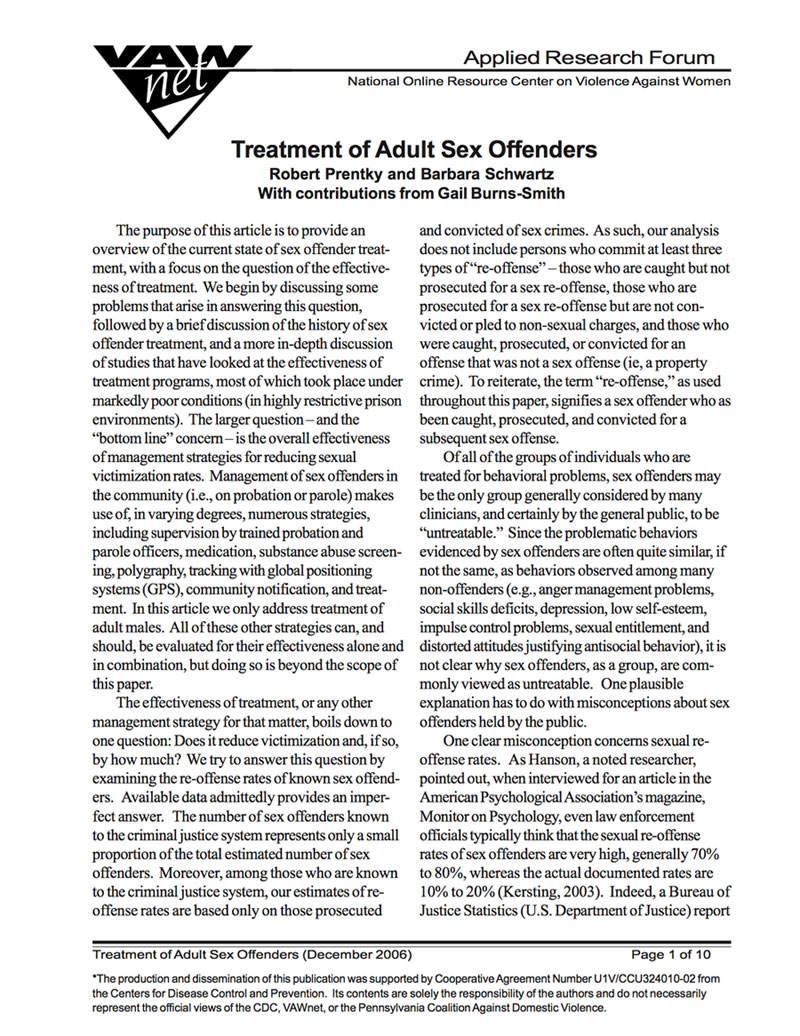Report
Treatment of Adult Sex Offenders

Treatment of Adult Sex Offenders
Robert Prentky and Barbara Schwartz
With contributions from Gail Burns-Smith
The purpose of this article is to provide an overview of the current state of sex offender treatment, with a focus on the question of the effectiveness of treatment. We begin by discussing some problems that arise in answering this question, followed by a brief discussion of the history of sex offender treatment, and a more in-depth discussion of studies that have looked at the effectiveness of treatment programs, most of which took place under markedly poor conditions (in highly restrictive prison environments). The larger question – and the “bottom line” concern – is the overall effectiveness of management strategies for reducing sexual victimization rates. Management of sex offenders in the community (i.e., on probation or parole) makes use of, in varying degrees, numerous strategies, including supervision by trained probation and parole officers, medication, substance abuse screening, polygraphy, tracking with global positioning systems (GPS), community notification, and treatment. In this article we only address treatment of adult males. All of these other strategies can, and should, be evaluated for their effectiveness alone and in combination, but doing so is beyond the scope of this paper.





